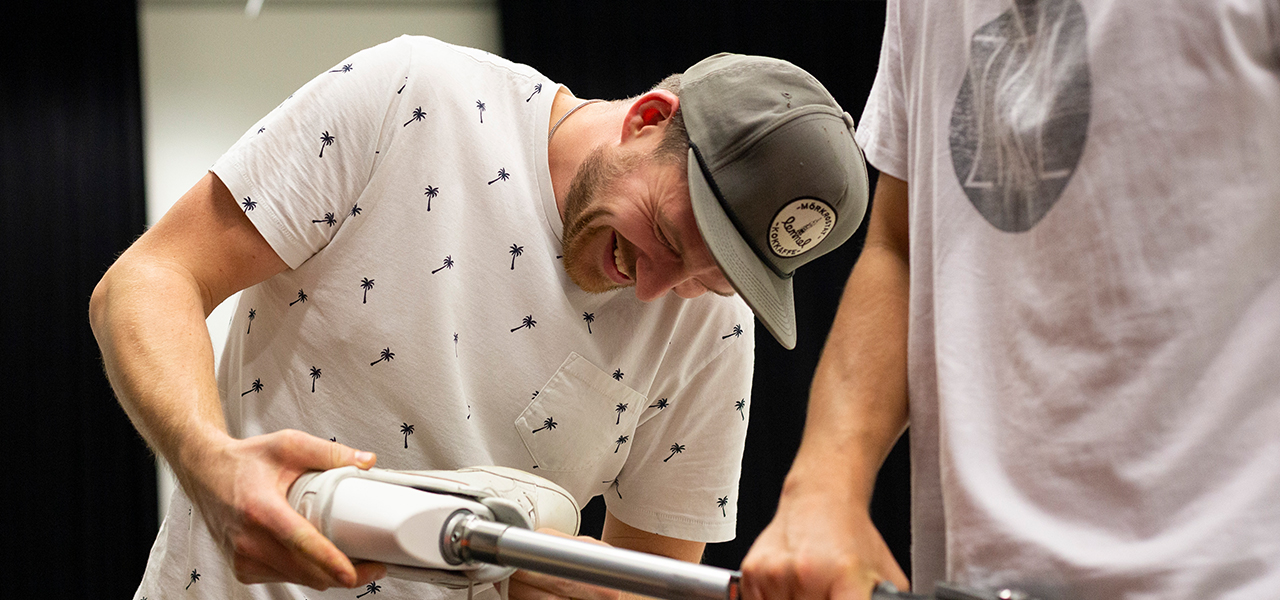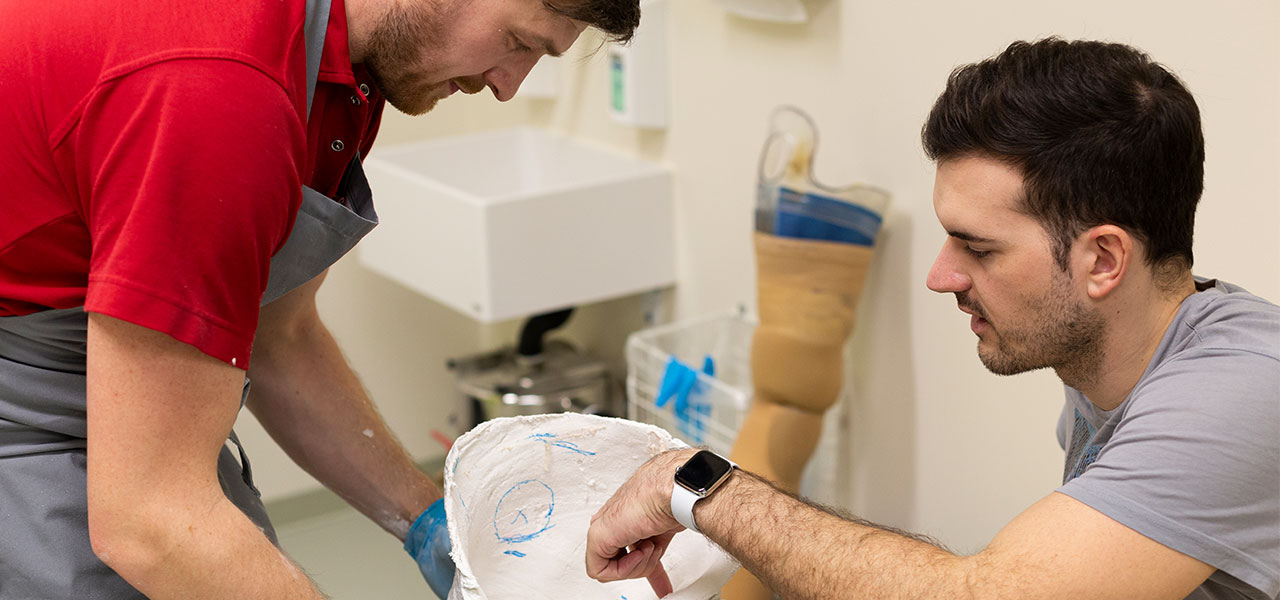
Extended Team
Orthopaedic Expertise
Thomas and Martin are orthopaedic technicians and part of the extended Circleg team. They bring their extensive experience and expertise to the development process of the Circleg system and work with us to design a fitting process specifically tailored to the Circleg system.
After an amputation the fitting of a lower-limb prosthesis can begin once the residual limb of the leg has healed. The subsequent process is performed by orthopaedic technicians. Orthopaedic technicians manufacture technical aids made according to the medical prescription for patients. These are used for the conservative treatment of orthopaedic problems and damage to the postural and locomotor apparatus, joint malpositions and instabilities and include prostheses and orthoses. Furthermore, orthopaedic technicians manufacture special bandages and corsets, but also products of rehabilitation technology such as seating shells or individual wheelchairs. They advise amputees on the choice of the appropriate aid, take anamneses, measure affected body parts, create construction drawings and models. In addition, they repair, maintain and adjust the aids and provide instruction in their operation and handling. Orthopaedic technicians thus play a key role in the fitting process of a prosthesis and therefore become reliable confidants of amputees.
When we started developing the Circleg system, it was clear to us that we would need to bring the support of orthopaedic technicians into the team. Through our network we have reached Thomas and Martin, who both work as orthopaedic technicians in Switzerland and have already gained experience in orthopaedic workshops such as in Uganda and India. They now are part of Circleg’s extended team and play an important role in the development of the prosthetic system. We consider orthopaedic technicians to be as much of a user of the prosthesis system as amputees. After all, they construct the individual components of a prosthesis system based on the measurements of the amputees, adapt it to their individual needs, and finally check the resulting gait pattern.
«Thomas and Martin, as experienced orthopaedic technicians, form the bridge between the new technical developments and the resulting perception of Andre and Beat»
The individual prosthesis components must therefore be easy-to-use for the orthopaedic technician. This includes the possibility of individual adaptation to the body of the amputee as well as good exchangeability of the individual components and as little production waste during the whole process as possible.

In the development process, Thomas and Martin, as experienced orthopaedic technicians, form the bridge between the new technical developments and the resulting perception of Andre and Beat. What technical change has what kind of influence on the walking experience? And conversely, how can the perception of Andre and Beat be transformed into a technical change? Thanks to their wealth of experience, Thomas and Martin can use precise questions to evaluate which changes need to be made in order to positively change the walking behaviour.
This is an important part of the process of fitting a prosthesis and is based on significant experience, knowledge and trust between the prosthetist and amputee.
Thomas and Martin not only contribute their expertise and experience to the development of the Circleg system, but also actually adapt the Circleg prototypes to Beat and Andre, participate in the testing sessions and accompany Beat and Andre during the gait training. Thomas is also part of the Circleg Cybathlon Team with which we will participate in the Cybathlon 2020.



